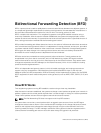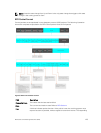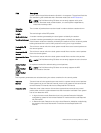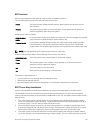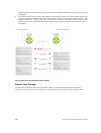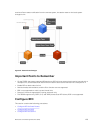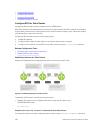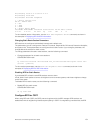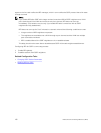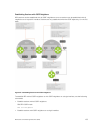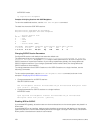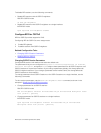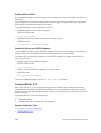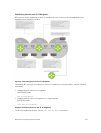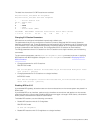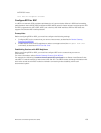
agent on the line card notifies the BFD manager, which in turn notifies the OSPF protocol that a link state
change occurred.
NOTE:
If you enable BFD after OSPF with a large number (more than 100) of OSPF neighbors on a VLAN
port-channel and if the VLAN has more than one port-channel, BFD does not come up
immediately. (This behavior occurs only if you enable BFD after connections with all OSPF
neighbors are fully established.)
BFD does not come up for 5 to 6 minutes in a scenario when all the following conditions are met:
• A large number of BFD neighbors are present.
• The neighbors are reachable over a VLAN through a port-channel and the VLAN has multiple
port-channels as members.
• BFD is enabled after all the OSPF neighbors are in an established state.
This delay should not be seen after a reload because OSPF will throttle neighbor establishment.
Configuring BFD for OSPF is a two-step process:
1. Enable BFD globally.
2. Establish sessions with OSPF neighbors.
Related Configuration Tasks
• Changing OSPF Session Parameters
• Disabling BFD for OSPF
132
Bidirectional Forwarding Detection (BFD)



